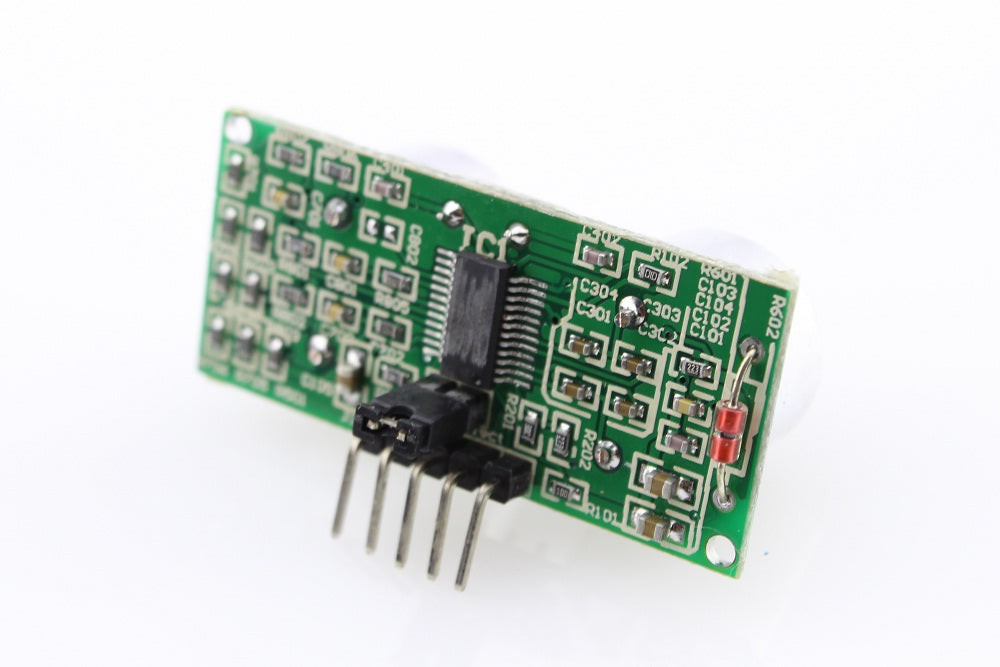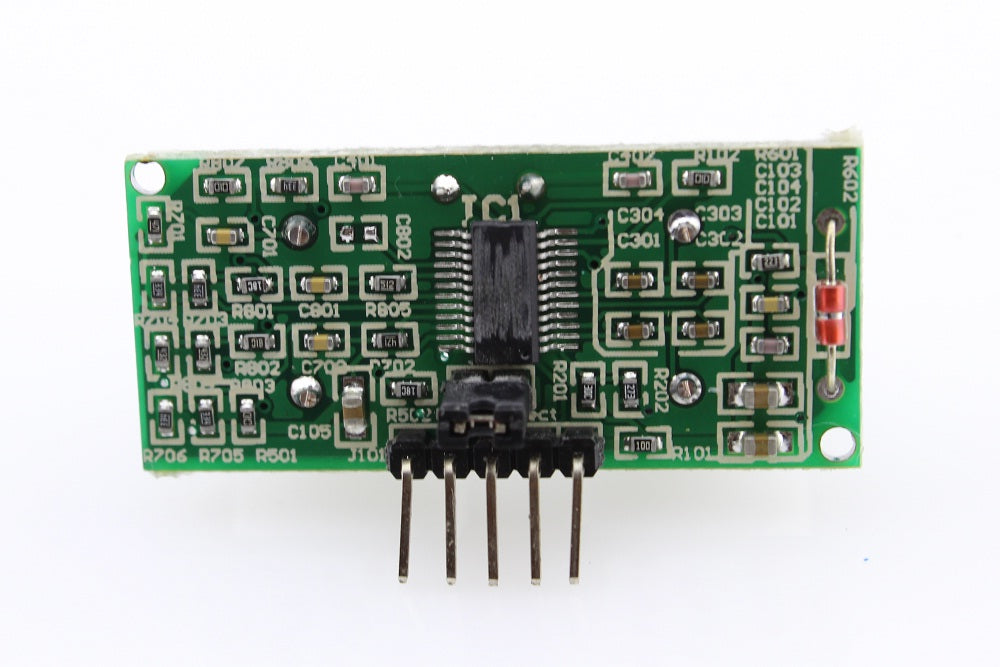Ultrasonic Ranging Sensor US-100
Ultrasonic Ranging Sensor US-100 - The low-cost US-100 ultrasonic sensor module is a compact, high-quality module for distance measurement. It can detect objects, obstacles, and walls up to a distance of 3.5-meters range. It is ideal for mobile robot applications. US-100 operation is based on reflective echo principle. A host microcontroller determines distance by triggering the US-100 module and then measuring the echo time indicated by the pulse width output of the sensor.
Contrast to the other ultrasonic ranging sensor, there is a build-in temperature sensor on the US-100 for accurate ranging even on varying ambient temperatures. Selected by the jumper, this sensor can also work in UART mode (band rate 9600) or GPIO mode, which makes you more convenient when making your applications.
Frequently Asked Questions About Ultrasonic Ranging Sensor US-100
Q1: Why should I wait for my ultrasonic sensor to warm up before using it?
Before allowing the ultrasonic sensor to warm up, it should not be calibrated or used. When a sensor is first turned on, the various parts heat up individually as well as the surrounding area and other parts. The accuracy of your observations may be impacted until all elements have stabilized at the proper operating temperature. This temperature variation from a chilly start to the functioning temperature is known as "Warm-Up Drift."
Q2: Describe a dead zone.
The region right in front of the transducer face, where the sensor is unable to make measurements with accuracy, is referred to as a dead zone. Ringing, a phenomenon, is to blame for this. Ringing in the transducer's continuing vibration following the stimulation pulse. Before the transducer can listen for a return echo, the energy must dissipate. Locate your target away from the ultrasonic sensor's designated dead zone.
Q3: Compared to photoelectric sensors, are ultrasonic sensors slower?
Yes. An ultrasonic sensor will by definition be slower than an optical sensor since the speed of sound is far slower than the speed of light.
Q4: When employing an ultrasonic sensor, what kinds of targets should I stay away from?
Large, flat, solid surfaces made of materials like metal, ceramic, glass, or wood make the ideal targets for use with an ultrasonic sensor. Positioning must always be parallel to the sensor. Avoid using soft or uneven surface targets like pellets, sawdust, or foam.
Q5: What is the most effective approach to using an ultrasonic to find objects put at random?
Teach the sensor your health condition as the "background." Any object passing between the sensor and the background will be identified by teaching an ultrasonically reflecting background surface as the ideal condition, resulting in output switching.
Q6: What aspects of the surroundings have an impact on an ultrasonic sensor?
The speed of the sound waves produced by an ultrasonic sensor is impacted by temperature changes. The speed of the sound waves to and from the target rises with temperature. The sensor will perceive the target as being closer even though it may not have moved. The path of the ultrasonic wave may also be altered or deflected by air currents caused by pneumatic machinery or fans. This can cause a sensor to mistakenly identify a target's incorrect location.
Specification
- Power Input: 3V-5VDC @ 3.5mA typical
- Technology: 40KHz Ultrasonic Sonar
- Trigger Input: TTL
- Induction Angle: no more than 15 degrees
- Detection range: 2 cm-450 cm
- High precision: up to 3 mm
- Echo Output: TTL
- PCB Dimensions: 20 x 45 mm
Ultrasonic Ranging Sensor US-100
Ultrasonic Ranging Sensor US-100
Out of stock
Product Code
SKU:SUS100UL
Couldn't load pickup availability








